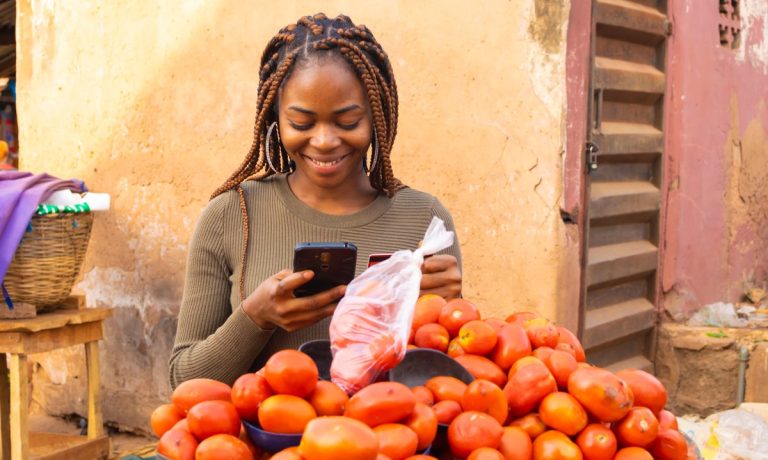
Amid the great digital shift, subsets of financial services remain challenged because of decades-old, friction-filled and fragmented processes.
Ruben Salazar, global head of Visa Direct, told Karen Webster an interview that cross-border remittances are one such payments service that has traditionally been frustrating. These payments and the process supporting them have been constrained mostly because they were built decades ago to accommodate the physical necessity for senders and receivers to send and pick up cash.
But that was before the digital transformation of payments and the worldwide explosion of mobile technology that made digital wallets commonplace. The global remittances business is evolving from one based solely on cash-centric networks to a network-of-networks strategy, making streamlined interactions on a global stage more efficient and less expensive — and boosting financial inclusion in the process.
Eliminating the Friction and Frustration
Salazar said he has first-hand experience in using these networks to send money home to family in El Salvador from the U.S. earlier in his career. Those transactions were traditionally enabled on both sides by a fragmented roster of physical agent networks — located in storefronts, tucked away in supermarkets, post offices and even banks.
Paper-based processes, multiple documents and even phone calls were the norm. Salazar gave a rundown of some of the steps. Wait for an agent with a special terminal in place for inputting data to do that, and then take the cash. Wait for a pickup code to be received, which then had to be given to the receiver so that they could pick up the cash.
The receiver on the other end then had to go to another supermarket, storefront or bank with that code to pick up the money — and often not the same day it was sent.
This process varied country by country; each market had its own networks based on agent contracts and proximity to large concentrations of receivers. There was some overlap but nothing approaching uniformity. Pricing was not well understood by senders or receivers.
“There’s no single business model, there’s no single network,” Salazar explained.
The Scale of Global P2P
To get a sense of the global scale of cross-border payments, remittances, which are only part of the story, provide some stark illumination. Consider the fact that 800 million people around the world receive money from family abroad to pay for necessities. Remittances drive a significant portion of developing country gross domestic product (GDP) — 4% on average, according to the International Monetary Fund (IMF).
PYMNTS’ research, done in collaboration with Stellar, found that consumers want change — better, faster, cheaper digital remittances.
Read more: Almost 25% of US Cross-Border Remittance Senders Use Crypto
Seventy percent of U.S. consumers who send money to families across borders and who pay fees to do that want more transparency, affordability and speed. Visa has found that digital remittances are the preferred method, where 59% of the remittance users surveyed said they have sent or plan to send money using digital-only platforms.
There’s some urgency here, as the data show that 32% of remittances are sent to friends and family in need.
“It can be an emotional transaction,” said Salazar of remittances.
Fostering ‘Digital Inclusion’
Salazar said Visa Direct’s platform is intended to create a single, real-time network using debit card credentials (billions of them) and direct bank account access to move money digitally and directly between senders and receivers. He pointed to the 2019 acquisition of cross-border payments network Earthport, through which Visa can reach 2 billion bank accounts in addition to the bank accounts accessed using debit cards that ride Visa’s debit rails.
Back when the Earthport deal was announced, as reported by PYMNTS, Bill Sheley, then-head of global push payments at Visa, said that the Earthport capability would help move Visa “beyond the card” and extend its reach to include an account-to-account (A2A) disbursement model.
See more: Why Visa Brought Earthport Into Its Orbit
For Visa and those who send and receive money across borders, any wallet and input is capable of transacting across its network.
“Regardless if you are in a Visa credential or in a bank account, or whatever value exists in that wallet, we can ‘land’ the transaction,” Salazar said, adding that at a high level, any digital wallet exists as an endpoint on Visa’s acceptance network, capable of receiving a digital payment, enabled by its network-of-networks capabilities.
“We’re a long way, then, from the days when accessing banking services meant being issued a tangible, plastic card linked to a traditional checking or credit account,” he said.
New Models and New Possibilities
Banks can offer real-time remittances simply by enabling their account holders to leverage the payments credentials they already have with the bank. Salazar pointed to news over the past several weeks, for example, in which Canadian bank CIBC announced that it had expanded its global money transfer functionalities with Visa Direct, with funds pushed directly, in real time, to Visa credit and debit cards across more than 80 countries. Qatar Islamic Bank launched the Visa Direct remittance service to transfer funds overseas in real time as well.
The seemingly eternal question is always in place: What about crypto? PYMNTS’ data show that nearly one-quarter of all U.S. consumers making cross-border, peer-to-peer (P2P) payments have sent funds using cryptocurrency using mobile wallets.
Salazar said that cryptos still present a “last-mile” issue in terms of converting the cryptos into fiat on each side of the transactions. But these new technologies, all-new capabilities and new players can also help accelerate the digital shift to real-time, digital, cross-border remittances. Visa’s aim, he said, is to make it seamless for senders and receivers to get money to their loved ones in the most efficient and secure way possible.
“Every single credential that is out there can be used to deliver money,” Salazar said, without the need to create a whole new network “online or in a face-to-face environment.”